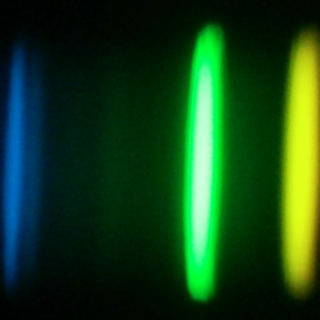Bibcode
González Hernández, J. I.; Suárez Mascareño, A.; Silva, A. M.; Stefanov, A. K.; Faria, J. P.; Tabernero, H. M.; Sozzetti, A.; Rebolo, R.; Pepe, F.; Santos, N. C.; Cristiani, S.; Lovis, C.; Dumusque, X.; Figueira, P.; Lillo-Box, J.; Nari, N.; Benatti, S.; Hobson, M. J.; Castro-González, A.; Allart, R.; Passegger, V. M.; Zapatero Osorio, M. -R.; Adibekyan, V.; Alibert, Y.; Allende Prieto, C.; Bouchy, F.; Damasso, M.; D'Odorico, V.; Di Marcantonio, P.; Ehrenreich, D.; Lo Curto, G.; Génova Santos, R.; Martins, C. J. A. P.; Mehner, A.; Micela, G.; Molaro, P.; Nunes, N.; Palle, E.; Sousa, S. G.; Udry, S.
Bibliographical reference
Astronomy and Astrophysics
Advertised on:
10
2024
Journal
Citations
22
Refereed citations
18
Description
Context. ESPRESSO guaranteed time observations (GTOs) at the 8.2m VLT telescope were performed to look for Earth-like exoplanets in the habitable zone of nearby stars. Barnard's star is a primary target within the ESPRESSO GTO as it is the second closest neighbour to our Sun after the α Centauri stellar system. Aims. We present here a large set of 156 ESPRESSO observations of Barnard's star carried out over four years with the goal of exploring periods of shorter than 50 days, thus including the habitable zone (HZ). Methods. Our analysis of ESPRESSO data using Gaussian process (GP) to model stellar activity suggests a long-term activity cycle at 3200 d and confirms stellar activity due to rotation at 140 d as the dominant source of radial velocity (RV) variations. These results are in agreement with findings based on publicly available HARPS, HARPS-N, and CARMENES data. ESPRESSO RVs do not support the existence of the previously reported candidate planet at 233 d. Results. After subtracting the GP model, ESPRESSO RVs reveal several short-period candidate planet signals at periods of 3.15 d, 4.12 d, 2.34 d, and 6.74 d. We confirm the 3.15 d signal as a sub-Earth mass planet, with a semi-amplitude of 55 ± 7 cm s‑1, leading to a planet minimum mass mp sin i of 0.37 ± 0.05 M⊕, which is about three times the mass of Mars. ESPRESSO RVs suggest the possible existence of a candidate system with four sub-Earth mass planets in circular orbits with semi-amplitudes from 20 to 47 cm s‑1, thus corresponding to minimum masses in the range of 0.17–0.32 M⊕. Conclusions. The sub-Earth mass planet at 3.1533 ± 0.0006 d is in a close-to circular orbit with a semi-major axis of 0.0229 ± 0.0003 AU, thus located inwards from the HZ of Barnard's star, with an equilibrium temperature of 400 K. Additional ESPRESSO observations would be required to confirm that the other three candidate signals originate from a compact short-period planet system orbiting Barnard's star inwards from its HZ.
Related projects

Very Low Mass Stars, Brown Dwarfs and Planets
Our goal is to study the processes that lead to the formation of low mass stars, brown dwarfs and planets and to characterize the physical properties of these objects in various evolutionary stages. Low mass stars and brown dwarfs are likely the most numerous type of objects in our Galaxy but due to their low intrinsic luminosity they are not so
Rafael
Rebolo López

Exoplanets and Astrobiology
The search for life in the universe has been driven by recent discoveries of planets around other stars (known as exoplanets), becoming one of the most active fields in modern astrophysics. The growing number of new exoplanets discovered in recent years and the recent advance on the study of their atmospheres are not only providing new valuable
Enric
Pallé Bago

Chemical Abundances in Stars
Stellar spectroscopy allows us to determine the properties and chemical compositions of stars. From this information for stars of different ages in the Milky Way, it is possible to reconstruct the chemical evolution of the Galaxy, as well as the origin of the elements heavier than boron, created mainly in stellar interiors. It is also possible to
Carlos
Allende Prieto